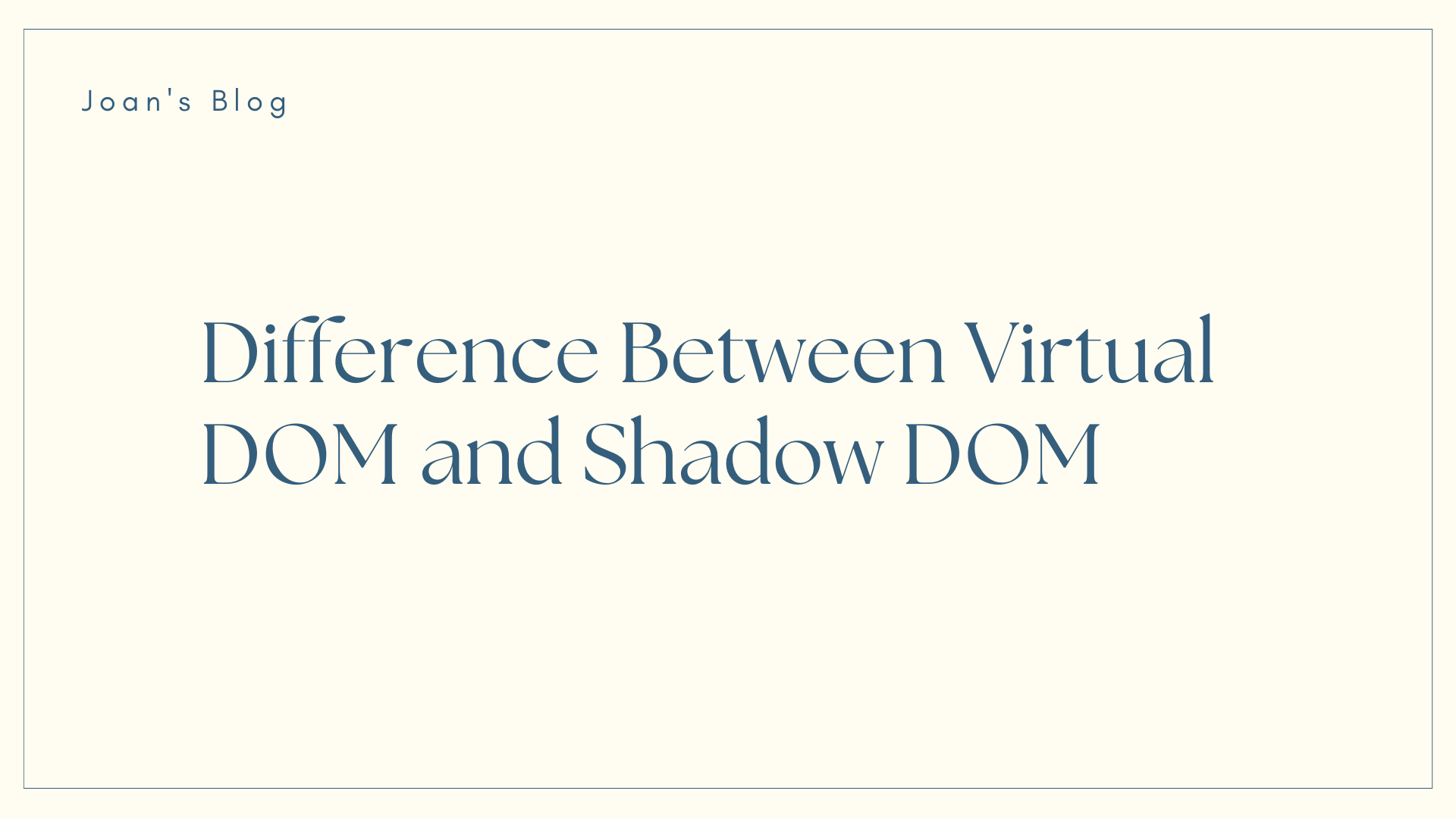In web development, understanding the inner workings of the Document Object Model (DOM) is crucial. Two concepts that often come up in discussions about DOM are Virtual DOM and Shadow DOM.
While they sound similar, they serve different purposes and have distinct characteristics.
In this comprehensive guide, we'll delve into the intricacies of Virtual DOM and Shadow DOM, highlighting their differences with simple explanations and illustrative code snippets.
Table of Contents
- Introduction to DOM
- What is Virtual DOM?
– How Virtual DOM Works - What is Shadow DOM?
– Understanding Shadow DOM - Differences Between Virtual DOM and Shadow DOM
- Conclusion
Introduction to DOM
Before we dive into Virtual DOM and Shadow DOM, let's briefly discuss what the Document Object Model (DOM) is.
The DOM represents the structure of an HTML document as a tree-like structure, where each node represents an element, attribute, or text within the document. JavaScript can manipulate the DOM dynamically, enabling developers to create interactive web pages.
What is Virtual DOM?
The Virtual DOM is a concept used by libraries like React to improve the performance of web applications. It's essentially a lightweight copy of the actual DOM, maintained by the framework.
When changes are made to the application state, React creates a new Virtual DOM representation and compares it with the previous one to identify the differences (known as "diffing"). Only the necessary changes are then applied to the real DOM, resulting in efficient updates.
How Virtual DOM Works
Let's consider a simple example to understand how Virtual DOM works in React:
// Initial render
const element = <div>Hello, world!</div>;
ReactDOM.render(element, document.getElementById('root'));
// Update
const updatedElement = <div>Hello, world! Updated.</div>;
ReactDOM.render(updatedElement, document.getElementById('root'));
In this example, React creates a Virtual DOM representation of the element. When an update occurs, it creates a new Virtual DOM representation of the updatedElement.
React then compares the two Virtual DOM representations to identify the difference (in this case, the text content change). Finally, React updates the real DOM with the necessary changes, resulting in an efficient update process.
What is Shadow DOM?
Shadow DOM is a term used to describe a limited or restricted view of the DOM tree. Unlike the Virtual DOM, which is a concept used to optimize performance, Shadow DOM refers to a specific structure within the DOM tree itself.
Understanding Shadow DOM
Consider a scenario where you have a custom web component encapsulated with Shadow DOM:
<!DOCTYPE html>
<html>
<head>
<title>Shadow DOM Example</title>
</head>
<body>
<my-custom-element></my-custom-element>
<script>
class MyCustomElement extends HTMLElement {
constructor() {
super();
const shadow = this.attachShadow({ mode: 'open' });
const span = document.createElement('span');
span.textContent = 'Hello, Shadow DOM!';
shadow.appendChild(span);
}
}
customElements.define('my-custom-element', MyCustomElement);
</script>
</body>
</html>
In this example, we define a custom element my-custom-element that encapsulates its content within Shadow DOM using the attachShadow method. The content inside the shadow root is isolated from the rest of the document, creating a boundary known as the Shadow DOM.
Differences Between Virtual DOM and Shadow DOM
Now that you have a basic understanding of the Virtual DOM and Shadow DOM, let's compare them based on different aspects:
Purpose
- Virtual DOM: Primarily aimed at improving performance by minimizing the number of DOM manipulations required during updates.
- Shadow DOM: Focuses on encapsulating the style and behavior of web components, providing a scoped environment for CSS and JavaScript.
Implementation
- Virtual DOM: Implemented by libraries/frameworks like React, Vue.js, and Angular to facilitate efficient updates of the real DOM.
- Shadow DOM: Implemented natively by web browsers to support encapsulation of web components with Shadow DOM.
Performance
- Virtual DOM: Offers performance benefits by reducing the number of DOM manipulations, resulting in faster updates and rendering.
- Shadow DOM: While Shadow DOM itself doesn't directly impact performance, it can enhance performance by isolating component styles and behavior.
Isolation
- Virtual DOM: Doesn't provide isolation by itself but helps in minimizing unintended side effects of DOM updates through its efficient diffing algorithm.
- Shadow DOM: Provides encapsulation and isolation for the content of web components, preventing style and behavior leakage to the rest of the document.
Usage
- Virtual DOM: Commonly used in modern JavaScript frameworks like React, where components are re-rendered efficiently based on state changes.
- Shadow DOM: Utilized when creating custom web components with encapsulated styles and behavior, ensuring modularity and reusability.
Conclusion
In conclusion, both Virtual DOM and Shadow DOM play significant roles in web development, albeit in different contexts. While Virtual DOM focuses on optimizing DOM updates for performance, Shadow DOM provides encapsulation and isolation for web components, enhancing modularity and maintainability.
Understanding the differences between these concepts is crucial for building efficient and scalable web applications.
By leveraging Virtual DOM in frameworks like React and embracing Shadow DOM for encapsulating web components, developers can create robust and maintainable web applications that offer optimal performance and scalability.
As web technologies continue to evolve, having a solid understanding of these concepts will remain invaluable in web development.

